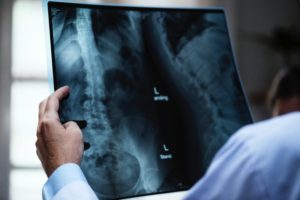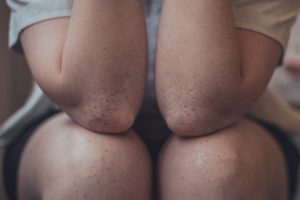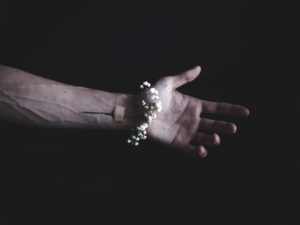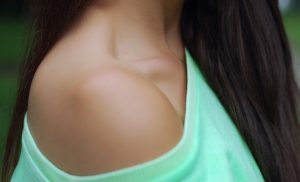PRP helps with an incredible range of issues, cosmetic and non-cosmetic alike, that ail the average individual. From muscle strain to skin grafts, PRP is a leading treatment option in multiple fields, and it continues to gain more traction as more patients attest to its healing benefits.
Here are 7 examples of applications of PRP that can benefit all genders:
Chronic Lower Back Pain
According to the CDC, chronic lower back pain is the second leading cause of disability in the U.S.- Americans take 149 million sick days per year for the issue! PRP is most beneficial in treating muscle strains and healing damaged tendons and ligaments in the lumbar area.
The most common cause of chronic lower back pain is job related. Physical jobs that demand a lot of bending or twisting are hard on the body. Alternatively, jobs which require a lot of sitting can also be a cause of lower back pain (especially if your chair doesn’t offer much back support). Heavy bags (backpacks, duffel bags, briefcases, etc), your workout, and overall posture are other major contributors to lower back pain.
The pain can range from dull to shooting; chronic lower back pain can make it impossible to stand up straight or have much mobility. If you’re suffering debilitating effects from chronic lower back pain and haven’t seen results from other treatments, consider trying PRP injections. Results are felt for up to 4-6 months on average after the initial procedure. You can repeat the procedure a few times per year.
 Musculoskeletal Injuries
Musculoskeletal Injuries
Musculoskeletal injuries include a range of ailments involving muscles, bones, tendons, blood vessels, among other soft tissues. The most common forms of musculoskeletal disorders include Carpal Tunnel Syndrome, Tenosynovitis, and Bursitis.
You are at greater risk to develop these issues if you apply excessive pressure to body parts, use forceful movements- like when working out- and/or repetitively overuse limbs- this includes maintaining a fixed position, like sitting all day.
PRP Facial Rejuvenation for Men
 That’s right guys, this one’s for you! More and more of you are jumping on the beauty bandwagon (yay!) and discovering the benefits of non-surgical options like PRP for facial rejuvenation. The most popular option for PRP facial rejuvenation is the Twilight Facelift.
That’s right guys, this one’s for you! More and more of you are jumping on the beauty bandwagon (yay!) and discovering the benefits of non-surgical options like PRP for facial rejuvenation. The most popular option for PRP facial rejuvenation is the Twilight Facelift.
The growth factors present in the PRP mixture help your skin appear younger and healthier by restoring its elasticity and natural glow. Micro-needling therapy is used in conjunction with PRP to combat wrinkles while kickstarting the collagen re-growth process.
Check out our article about Cosmetic Applications of PRP to learn about other PRP services for men!
 PRP Joint Therapy
PRP Joint Therapy
Once injected into your body, the bioactives present in PRP get straight to work repairing tissues. These bioactive proteins and growth factors accelerate the healing process. Those suffering from joint injuries turn to PRP joint therapy in order to avoid other invasive options, namely surgery.
PRP is successful at treating a variety of joint issues including tendinitis, arthritis, torn ligaments and tendons (such as ACL injuries), and sprains of various joints.
 Foot and Leg Ulcers
Foot and Leg Ulcers
Leg ulcers develop whenever there is a large amount of thick skin loss. Up to 1% of the elderly population and roughly 15-25 % of the diabetic population are most at risk to develop them.
The skin loss can be due to any reason and the ulcer can either be acute or chronic. Arterial, vascular, and neuropathic diseases are common associates of leg and foot ulcers. You are most likely to see the development of a leg ulcer occur after a minor injury.
The minor injury is most likely caused by one of 4 issues:
- Chronic Venous Insufficiency
Venous ulcers occur when blood doesn’t flow properly from the leg back to the heart. The leading causes of venous ulcers are increasing age, obesity, high blood pressure, among other factors.
- Chronic Arterial Insufficiency

An arterial ulcer is due to inefficient blood flow to the area in question. These ulcers tend to occur in the lower legs and feet and can be classified as either acute, chronic, or recurrent.
- Diabetes
On average, around 15% of diabetics suffer from diabetic foot ulcers. These foot ulcers usually appear as sores on the foot and can affect people with both type 1 and type 2 diabetes. Diabetic foot ulcers most often occur due to nerve and blood vessel complications caused by the disease.
- Hypertension (high blood pressure)
Those suffering from non-healing foot and leg ulcers are looking for non-surgical alternatives to rid them of their pain. According to a study done in India in 2014, the increased presence of growth factors in PRP can help immensely in treating these troublesome ulcers.
 Skin Grafting
Skin Grafting
Skin grafts are skin from other areas of the body that cover areas devoid of skin. They are needed when affected areas are too large to be closed with area skin and/or stitches. Patients suffering from severe burns, certain illnesses, or serious injuries benefit the most from this procedure.
A skin graft does not have its own blood supply, so it relies on the nutrients from the wound on which it is placed. Therefore, the wound starts healing itself once the skin graft is placed on the affected area.
PRP is often used in conjunction with skin grafts in order to promote healing.
A study conducted in 2008 at the Madigan Army Medical Center concludes that injecting PRP into the graft site “seems to enhance primary healing and reduce healing time” due to the “enhancement of the wound environment with growth factors”.
 Post-Traumatic Scars
Post-Traumatic Scars
PRP can help diminish the appearance of scars from C-sections and other surgeries as well as those from severe acne. It is best when used in combination with other treatment options, such as Fraxel laser treatments (which help resurface skin).
The presence of growth factors in PRP stimulates new collagen growth and creates new blood vessels which improve elasticity and appearance of the skin. During the procedure, an injection of PRP is given along with a combination of centrifuged fat tissue to the affected area. Afterwards, it is highly recommended that the patient undergo Fraxel laser treatments (or other skin resurfacing treatment of their choice) in order to see optimal results.
‘Tis the Season…
…to get relief!
Schedule an appointment with Veritas Backstage to see how PRP can change your life for the better!
And as always, we’re here to answer any questions, concerns, or comments that you may have. Schedule a free consultation, give us a call, or shoot us an email today!
